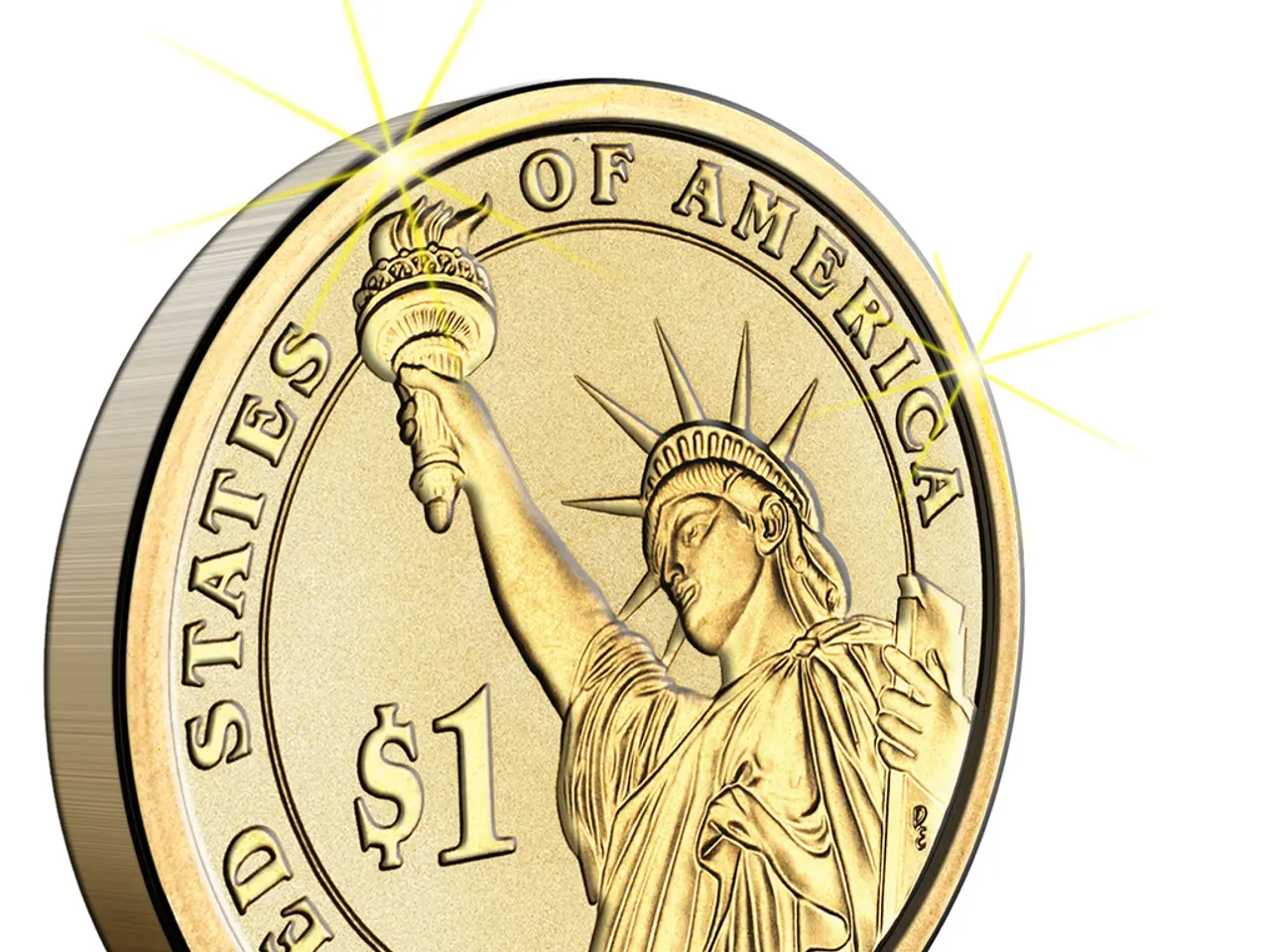Surveying the Surge of Cryptocurrency Exchange-Traded Funds in the Year 2025
In the dynamic world of finance, 2025 has seen a significant shift in the cryptocurrency market with the boom in Exchange-Traded Funds (ETFs). This transformation, largely driven by the U.S. Securities and Exchange Commission's (SEC) approval of in-kind redemption mechanisms for spot Bitcoin and Ethereum ETFs, is poised to have far-reaching implications for the prices of Bitcoin, Ethereum, and the broader digital asset market.
Price Appreciation for Bitcoin and Ethereum
The in-kind redemption mechanism, a game-changer for institutional investors, allows them to exchange ETF shares directly for the underlying cryptocurrencies instead of cash. This mechanism reduces friction, lowers transaction costs, and tightens arbitrage windows, leading to faster and more accurate price discovery.
Institutional inflows into Bitcoin ETFs have already driven Bitcoin’s price up from $45,000, with net inflows surpassing $54 billion in the first half of 2025. Ethereum ETFs are currently outperforming Bitcoin ETFs in inflows, with a notable 62% price surge to $3,900 in July 2025 due to institutional enthusiasm and a significant supply-demand imbalance as ETF inflows absorb far more ETH annually than the network mints.
The approval could spark a $710 billion supply squeeze, as ETFs become a dominant holder of these assets, reducing available market supply and potentially pushing prices substantially higher over time.
Increased Institutional Adoption and Market Maturity
The regulatory upgrade aligns crypto ETFs with traditional commodity ETFs, making the investment vehicles more institutional-grade and appealing to large investors. This shift can draw in more capital from pension funds, insurance companies, hedge funds, and corporate treasuries.
Enhanced liquidity and efficiency may reduce volatility and enable more stable, predictable market dynamics, which historically supports long-term price growth and broader adoption in both DeFi and traditional finance ecosystems. Corporate treasury adoption, exemplified by entities like SharpLink Gaming purchasing large quantities of Ethereum, confirms growing confidence in digital assets as long-term strategic investments—this corporate demand adds to upward price pressure.
Broader Digital Asset Market Impact
The crypto ETF boom in 2025 could catalyze further mainstream acceptance of digital assets, facilitating more product innovation such as mixed BTC+ETH ETPs and expanded derivatives markets, improving depth and sophistication in crypto finance.
Growing ETF flows and institutional engagement may set a precedent that encourages similar regulatory frameworks and investment products worldwide, expanding global liquidity and driving more extensive capital inflows into crypto. This would support not just Bitcoin and Ethereum, but potentially other digital assets tied to DeFi, NFTs, and tokenized real-world assets.
Fidelity's FBTC, with an AUM of approximately $20 billion, is one of the players in this rapidly evolving landscape. Low-fee entrants like Bitwise BITB and VanEck's HODL are also rapidly gaining traction among retail investors. Notably, platforms like Robinhood, SoFi, and Fidelity have integrated Bitcoin and Ethereum ETFs into their tax-advantaged accounts, catering to the preference of retail investors for regulated ETF vehicles over high-risk tokens.
Grayscale's GBTC, despite a high management fee, retains over $18 billion but has seen declining daily inflows due to competitive pressure. However, Ethereum ETFs have emerged, with Fidelity and ARK 21Shares launching spot ETH ETFs in Q2, quickly gathering $3.5 billion in AUM within the first three months. BlackRock's IBIT charges a modest 0.12%, while Bitwise's BITB holds at 0.20%. Grayscale GBTC, despite its size, continues to charge a 1.5% annual fee.
Over 60% of new ETF inflows in Q2 2025 came from managed portfolios and retirement accounts, bringing new participants into the crypto ecosystem, including registered investment advisors (RIAs), pension funds, and family offices.
As these ETFs scale, the available float of BTC on public exchanges shrinks, supporting upward price momentum and reducing volatility caused by short-term speculators. The 2025 ETF boom has undoubtedly set the stage for a more mature, institutional-grade digital asset market.
- As a result of the SEC's approval of in-kind redemption mechanisms for spot Bitcoin and Ethereum ETFs, institutional investors are increasingly investing in Bitcoin and Ethereum ETFs, leading to a significant price surge for both cryptocurrencies.
- Bitcoin ETFs have witnessed a remarkable inflow of $54 billion in the first half of 2025, driving Bitcoin's price up from $45,000, while Ethereum ETFs have experienced a notable 62% price surge to $3,900 due to institutional enthusiasm.
- The increased adoption of cryptocurrency ETFs could potentially extend beyond Bitcoin and Ethereum, driving product innovation such as mixed BTC+ETH ETPs and expanding derivatives markets in the broader digital asset market.
- The growing preference for regulated ETF vehicles among retail investors, coupled with the launch of spot ETH ETFs by Fidelity and ARK 21Shares, is indicative of a broader trend towards mainstream acceptance and maturity of the digital asset market.




